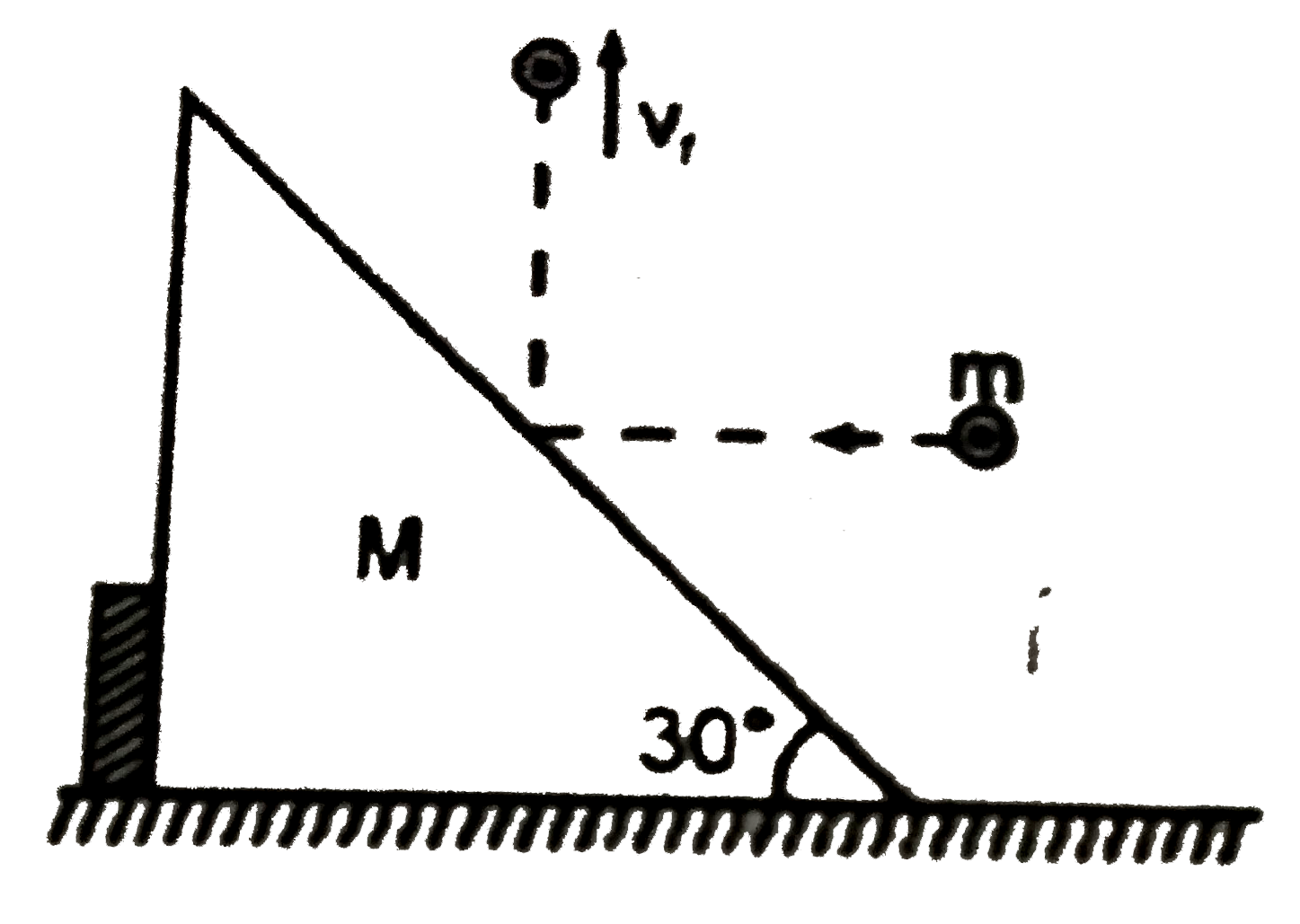A shock wave is a region of high acoustic pressure propagating at speed of sound (v). Assume that the pressure in one such shock wave is 2P0 where P0 is the atmospheric pressure. This shock wave is travelling horizontally along x direction and hits a small wedge whose dimensions are as shown in the figure. The wedge has a mass m and is lying on a smooth horizontal surface. Determine the velocity u acquired by the wedge immediately after the shock wave passes through it. The velocity acquired by the wedge should be assumed to be much lower than the velocity of the wave (u<<v).

The correct Answer is:P0abc2mv
Step by step video, text & image solution for A shock wave is a region of high acoustic pressure propagating at speed of sound (v). Assume that the pressure in one such shock wave is 2P_(0) where P_(0) is the atmospheric pressure. This shock wave is travelling horizontally along x direction and hits a small wedge whose dimensions are as shown in the figure. The wedge has a mass m and is lying on a smooth horizontal surface. Determine the velocity u acquired by the wedge immediately after the shock wave passes through it. The velocity acquired by the wedge should be assumed to be much lower than the velocity of the wave (u lt lt v). by Physics experts to help you in doubts & scoring excellent marks in Class 11 exams.
Updated on:21/07/2023Topper's Solved these Questions
Similar Questions
A long taut string is plucked at its centre. The pulse travelling on it can be described as y(x,t)=e−(x+2t)2+e−(x−2t)2. Draw the shape of the string at time t=0, a short time after t=0 and a long time after t=0.
View SolutionDuring a painting process, a thin, flat tape of width b (dimension perpendicular to the plane of the figure) is pulled through a paint filled channel of length L. The density and viscosity of the paint liquid is ρ and η respectively. The tape is pulled at a constant speed v and width of the channel is h. Find the minimum force needed to pull the tape.

View Solution(i) The cause of increases in kinetic energy when a man starts running without his feet slipping on ground is asked to two students. Their answers are– Harshit: Cause of increase in kinetic energy is work done by friction force. Without friction the man cannot run. Akanksha: Cause of increase in kinetic energy is work done by internal (muscle) forces of the body. Who is right? (ii) An inextensible rope is hanging from a tree. A monkey, having mass m, climbs to a height h grabbing the rope tightly. The monkey starts from rest and ends up hanging motionlessly on the rope at height h. (a) How much work is done by gravity on the monkey? (b) How much work is done by the rope on the monkey? (c) Using work – energy theorem, explain the increase in mechanical energy of the monkey.
View SolutionAs shown in the figure a body of mass m moving horizontally with speed √3m/s hits a fixed smooth wedge and goes up with a velocity 1vt in the vertical direction. If ∠ of wedge is 30∘, the velocity vf will be :

View SolutionStatement-1 : Shock waves produced by supersonic aircraft may be visible
Statement-2 : The sudden decrease in air pressure in the shock waves caused water molecules in the air to condense, forming a fog.
View SolutionA source of sound placed at the open end of a resonance column sends an acoustic wave of pressure amplitude P0 inside the tube. If the atmospheric pressure is PA, then the ratio of maximum and minimum pressure at the closed end of the tube will be
View SolutionA supersonic jet travels with twice the speed of sound in air. What is the angle of the conical wavefront of the shock wave produced by the jet?
View SolutionSHOCK WAVES : SONIC BOOM
View SolutionIn a tsunami the shock waves originating in the ocean bed propagate
View Solutionप्रघाती तरंग (Shock wave) क्या है?
View SolutionA source of sound placed at the open end of a resonance column sends an acoustic wave of pressure amplitude P0 inside the tube. If the atmospheric pressure is PA, then the ratio of maximum and minimum pressure at the closed end of the tube will be
View SolutionAn explosion creates a shock wave. Find the initial velocity of the wave front when the air pressure is 200 times the atmospheric pressure, assuming that the front of the shock wave may be regarded as a discontinuity in the density. Take into account that at such pressures gamma = 1.8 .
View SolutionSound wave||Introduction||Pressure wave || Displacement wave||Equation OF pressure waves||Speed OF sound waves in fluid and solid||Examples on sound waves
View SolutionAs shown in the figure a body of mass m moving horizontally with speed √3m/s hits a fixed smooth wedge and goes up with a velocity vf in the vertical direction. If ∠ of wedge is 30∘, the velocity vf will be :

View SolutionThe pressure variations in the propagation of sound waves are
View Solution
